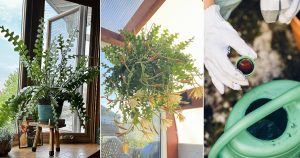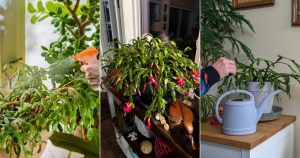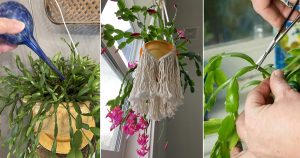Learn how to care for your succulents indoors and outdoors with simple tips to keep them thriving year-round.
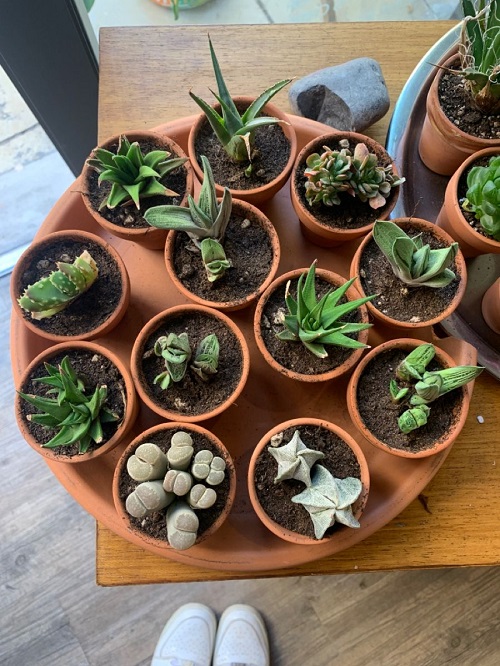
Before the cold hits, bring your delicate succulents inside. Check for bugs like ants and spiders, clear off dead leaves and twigs, and wipe the foliage clean. Once they’re pest-free and tidy, they’re ready for their cozy indoor stay.
How to Care for Succulents Indoor
Succulents are born survivors. Their plump leaves store water, helping them live through long, dry spells. But even these hardy plants need a little pampering indoors.
Most succulents take a nap once a year—it’s their way of saving energy. Some rest in winter, while others slow down in summer. During this time, water less—about once every two weeks is plenty.
Jade, Aloe Vera, Snake Plant, Haworthia, and Kalanchoe prefer their beauty sleep in summer and start growing again in fall. So don’t panic if one slows down while another perks up—it’s all part of their rhythm.
Succulents aren’t demanding. Give them well-draining soil, bright light, and a good dry spell between waterings, and they’ll stay cheerful all through winter.
Tip: Turn your pots every couple of weeks so they grow evenly toward the light.
Repotting
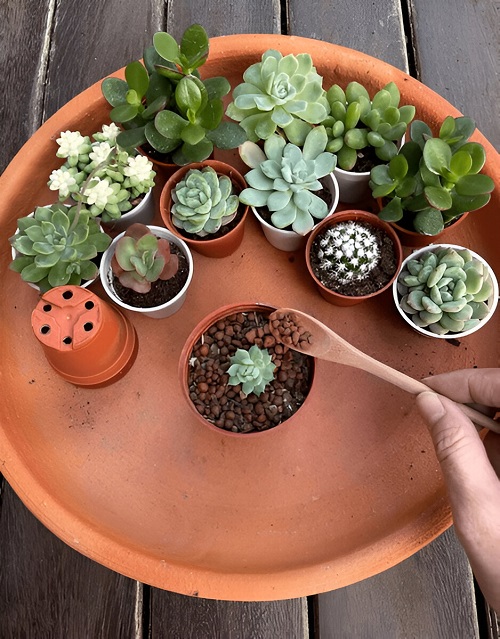
Repotting allows your succulents to start over indoors. Select a pot that will fit neatly by your window and soil that is sandy and well-draining.
Don’t use regular potting soil because it retains too much moisture. Instead, choose a pot with drainage holes and plant a cactus or succulent mix. The roots are more delicate than they appear, so move them carefully.
Steer clear of glass jars as they retain moisture and impede airflow. Succulent roots also enjoy airflow!
Before potting, loosen the roots if the plant appears to be root-bound. To improve drainage, place a thin layer of coarse sand or pebbles at the bottom.
Sunlight
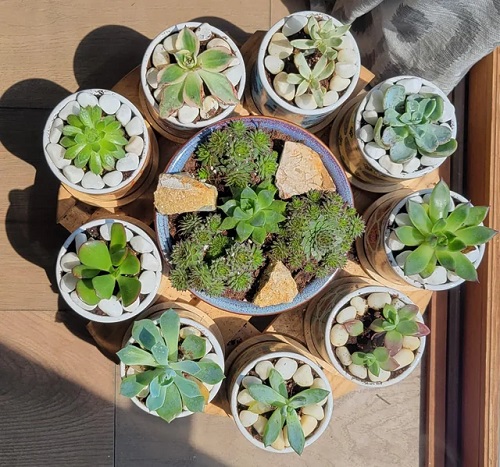
Light habits vary amongst succulents. While some people prefer bright, indirect light, others thrive in full sun. Your plant is pleading for more sunlight if it is leaning toward the window.
For optimal effects, place them close to a window that faces south or east. A grow light for 10 to 12 hours a day keeps them content if sunlight is limited. They stretch tall like they’re chasing the sun and lose color in the absence of sufficient light.
Bugs and Pests
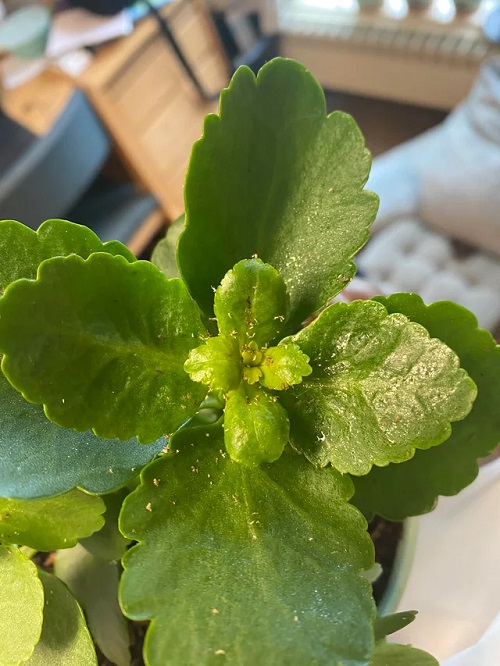
Uninvited visitors are disliked by everyone, especially your succulents. Before bringing them inside, inspect the soil and leaves for mealybugs, ants, or spiders.
If any are present, use a moist cloth to wipe the leaves or mist them with a mild neem oil solution. Early pest detection saves you a great deal of trouble later.
Got one plant that’s infested? Quarantine it until it’s pest-free. A quick dab of rubbing alcohol on mealybugs usually does the trick.
Watering
Most plant parents make the mistake of giving their plants too much love and water. Succulents enjoy a long drink and then a dry spell. Before watering again, allow the top inch of soil to completely dry.
Aim for the soil rather than the leaves when you water. Rot is encouraged by wet leaves. Consider watering as a rare, deep, and swift desert rainstorm.
Reduce the watering can if the leaves become mushy or discolored. Water less frequently in the winter because the soil dries out more slowly. Always check before watering—every home has its own climate story.
Can Succulents Be Kept Outside?
Soil
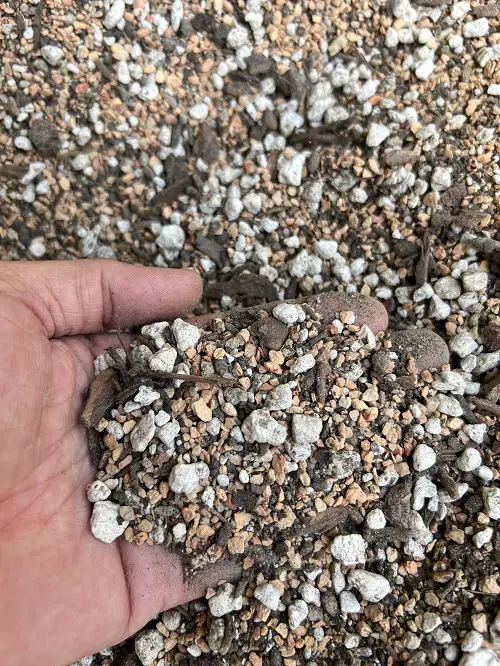
Rocky, loose soil that drains quickly is ideal for outdoor succulents. The ideal mixture has a pH of 6.0 to 6.5, which is slightly acidic. Steer clear of heavy, alkaline soil as it can damage the roots.
You can make your own blend with two parts sand, two parts garden soil, and one part perlite or pumice. It keeps the roots dry and airy, just the way they like it.
Light and Temperature
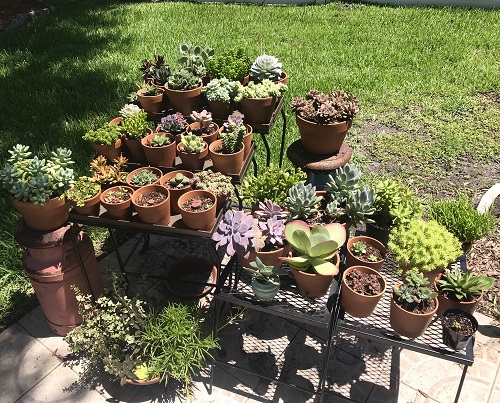
Succulents thrive under full sun, but too little light makes them grow weak and unbalanced. Some hardy varieties can stay outdoors in winter if the soil drains well and they get a bit of shelter.
Tender ones, though, should come indoors before frost hits. Keep them by a sunny window or under grow lights until spring returns.
If you live somewhere hot, give your plants a bit of afternoon shade. A light cloth or a partly shaded spot protects them from getting scorched.
Watering
Water outdoor succulents deeply but less often. Once a week is usually enough during the growing season. Let the soil dry slightly between waterings—overwatering is still their worst enemy.
After heavy rains, make sure no water collects at the base of your pots. Raise them on bricks or stands to help drainage and airflow.
Fertilization
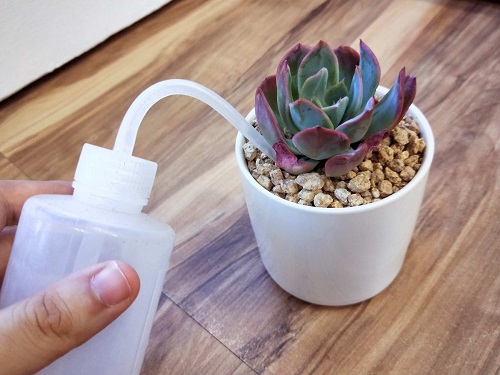
A little food goes a long way for succulents. Feed them a diluted, balanced fertilizer (like 10-10-10) every 4–6 weeks in spring and fall. Skip it in winter or during dormancy.
Too much fertilizer can make the leaves soft and pale, so when in doubt—less is more.
Caring for succulents isn’t rocket science—it’s more like reading their subtle hints. Once you get the hang of it, they’ll reward you with lush, plump leaves and maybe even a few blooms. So, how far have you come in your succulent journey?

